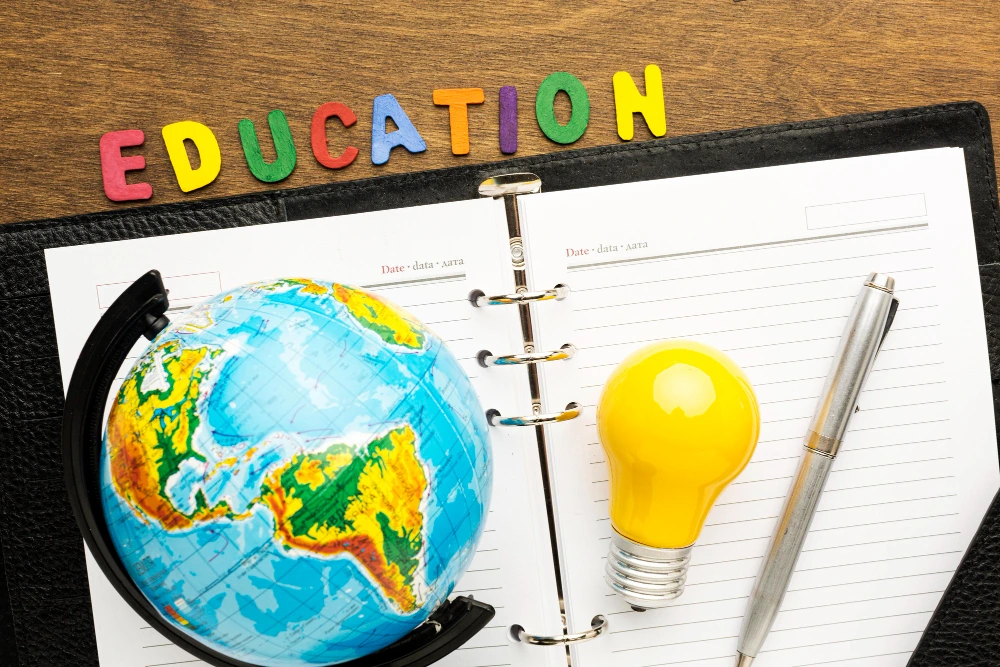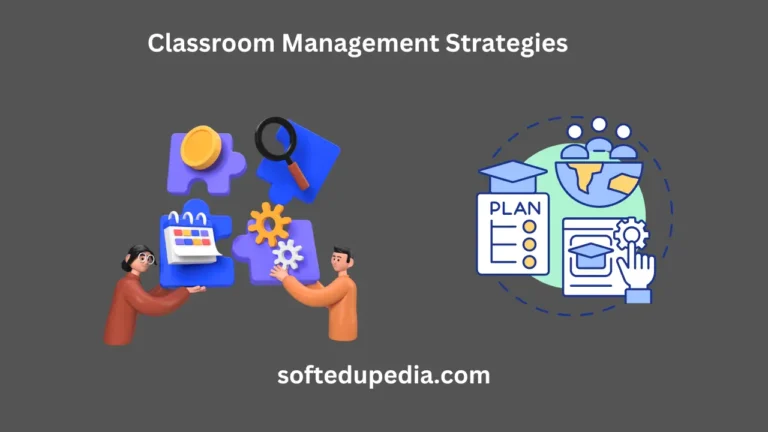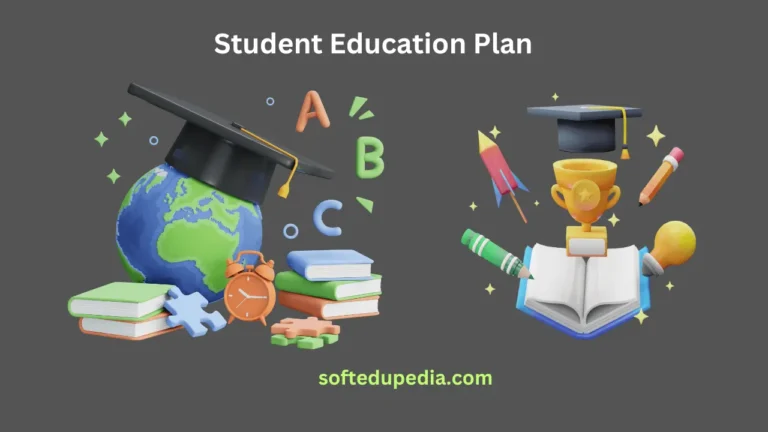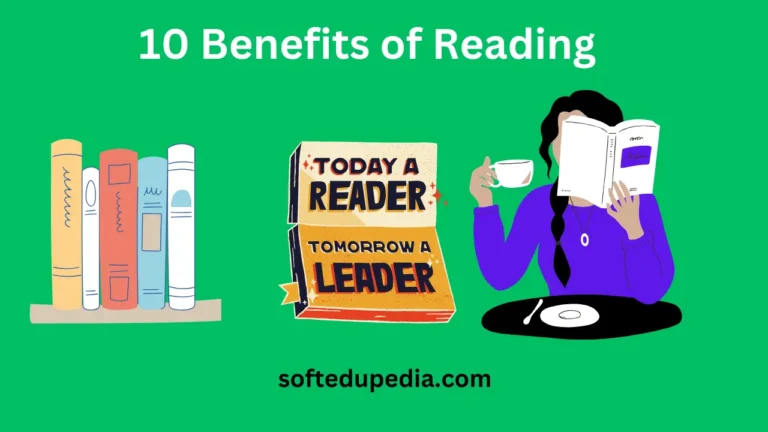Understanding Fundamental Paper Education: A Ultimate Guide
“Fundamental paper education” refers to the essential understanding of the role paper plays in educational settings, encompassing its utility, variety, and impact on learning and teaching methods. Despite the rise of digital tools, paper remains a staple in classrooms, offering unique benefits for both students and teachers. From supporting literacy development to enabling creative expression, the paper serves multiple educational purposes that digital alternatives may not fully replicate. The term encapsulates diverse aspects including types of paper available for schools, the historical development of paper-related educational techniques, and the future direction of paper usage in classrooms. In understanding this concept, we acknowledge its continuing importance alongside technological advancements, emphasizing a balanced approach to learning resources.
Importance of paper in educational settings
Paper remains a crucial component in educational settings due to its versatility and tactile nature, which enhance various learning experiences. Unlike digital tools, paper provides a tangible method for absorbing information, supporting kinesthetic learning styles and allowing for hands-on interactions with content. From worksheets to creative art projects, physical engagement with paper can improve motor skills, concentration, and cognitive development among students. Must Read: Metacognitive Strategies
Additionally, the permanence of written material on paper aids memory retention, making it easier for students to review and comprehend complex concepts over time. Educational systems worldwide recognize these benefits, maintaining paper as a fundamental element in pedagogy. As classrooms evolve with digital integration, the complementary role paper plays in a holistic educational approach continues to be underscored.
Brief overview of blog content
This comprehensive blog aims to explore the multifaceted role of paper in educational contexts, delving into its historical significance, various types used in schools, and its implications for learning. By offering insights into eco-friendly initiatives and innovative uses of paper, it highlights ongoing efforts to balance sustainability and educational efficacy. Readers will gain an understanding of the comparative role paper has alongside digital education tools, the importance of specific paper types, and the creativity it inspires in classroom projects. The blog also considers global paper education systems and future trends, providing a well-rounded view of how paper continues to shape educational practices and policies.
Table of Contents
Historical Insight
Development of paper education techniques
The development of paper education techniques is a testament to the evolving ways in which paper has been utilized to enhance learning. Initially, the paper provided a durable and accessible medium for recording and conveying knowledge, replacing less practical alternatives like parchment and stone tablets. Over centuries, pedagogical methods have integrated paper through the creation of textbooks, workbooks, and teaching aids that support structured learning.
The growth of printing technology played a pivotal role in the widespread availability of educational materials, democratizing access to information. In modern times, innovation within paper education techniques continues, with interactive and tactile approaches like origami and paper folding activities gaining popularity for teaching complex ideas, particularly in mathematics and geometry. These techniques reflect the adaptation of traditional tools to meet contemporary educational objectives.
The evolution of writing paper styles
Tracing the evolution of writing paper styles reveals the historical and functional shifts in educational materials. Early educational systems utilized simple, unlined paper, which transitioned to lined paper to assist with handwriting instruction. The need for precision in subjects like mathematics paved the way for graph and grid paper, enabling clearer organization of numerical data and geometry exercises.
Over time, developers introduced speciality papers, like construction paper for art education, expanding the use of paper beyond mere writing into diverse creative and educational applications. In recent years, with environmental concerns shaping product development, an emphasis on recycled and eco-friendly paper styles has become prevalent. This evolution represents a response to educational demands, technological capabilities, and social values across different eras.
Types of Paper for Educational Purposes
Essential paper types used in educational settings
Educational settings require various paper types, each serving distinct purposes to facilitate diverse learning experiences. Lined notebook paper remains fundamental for practising writing skills and note-taking, providing structure to assist legibility and organization. For mathematical calculations and diagramming, graph paper offers precision with its grid layout, supporting accurate plotting and alignment. Construction paper is commonly used in art classes for its durability and range of colours, perfect for creative projects that require cutting and glueing.
Additionally, tracing paper aids in learning about shapes and patterns by allowing students to copy images and designs, enhancing understanding through replication. These essential types illustrate the myriad ways that paper can adapt to educational demands, providing specific features that digital tablets and screens may not replicate effectively.
Specialty papers for classroom use
Beyond the common varieties, speciality papers cater to specific educational needs, expanding the functional repertoire of paper within classrooms. Watercolour paper, with its thick and absorbent quality, is ideal for art classes focusing on painting techniques, where it supports the dynamic application of colour. Transparent overlay paper serves in technical drawing and architecture classes, providing layers that can be adjusted and removed to view separate elements of a design.
Additionally, photographic paper introduces students to the basics of photography, allowing them to develop and view images firsthand. The availability of these speciality papers enhances educational curricula by offering hands-on experience with materials that encourage the exploration of artistic and technical disciplines. Their use supports a well-rounded learning approach that cultivates both creative and practical skills.
Notable role of graph paper and grid paper
Graph and grid paper hold notable positions in education for their ability to organize information in a precise, logical manner. In mathematics, these papers facilitate teaching and learning of graphing functions, plotting statistical data, and practising geometry, all of which require accurate alignment and scaling. Their predefined structures help students visualize complex concepts, making abstract ideas more accessible.
Beyond mathematics, these papers are applied in science and engineering projects, where detailed planning and diagrams are necessary. Moreover, they support problem-solving activities by providing a framework that encourages methodical thinking and systematic approaches, crucial skills across educational levels. The continued reliance on graph and grid paper underscores their vital role in developing analytical skills and precision among students in various subjects.
Paper Characteristics and Educational Uses
Paper thickness and its implications for educational materials
Paper thickness or paperweight significantly impacts its suitability for different educational materials, influencing factors like durability, texture, and ability to support various media. Heavier papers, such as cardstock, are resistant to tearing, making them ideal for crafting projects that involve folding or cutting. Such papers are popular in early education environments for activities that require robustness.
Conversely, lighter papers are often used for daily worksheets and handouts, balancing cost and functionality while being easy for students to handle. The thickness also plays a role in artistic endeavours; for example, watercolour painting demands thick, absorbent paper to accommodate wet media. Understanding paper thickness helps educators select the most appropriate material for each educational task, ensuring that the paper’s characteristics align with the intended educational outcomes and learning experiences.
Understanding paper density: grams in educational settings
Paper density, measured in grams per square meter (gsm), is an essential specification used to indicate paper quality and suitability for different educational purposes. Educators consider the gsm when selecting paper for specific applications, ensuring that the weight aligns with the intended use. Higher gsm papers, such as those used for drawing or painting, provide sturdiness and a smooth surface conducive to ink and paint, promoting vibrant colours and sharp details.
On the other hand, standard lecture notes and photocopy paper typically have a lower GSM rating, favouring ease of use and cost-effectiveness. Knowledge of paper density empowers educators to make informed decisions when selecting paper for different educational tasks, ensuring that paperweight aligns with the expected outcomes of each learning experience.
Importance of texture and finish for paper used in education
The texture and finish of paper play crucial roles in its suitability for educational use. Smooth and glossy finishes, created through coating or calendering processes, support ink and colour vibrancy, making them ideal for printed materials like textbooks and worksheets. Coarser textures offer better grip for writing instruments like pencils, providing easier handling for young students still developing their fine motor skills.
Additionally, textures can enhance the tactile experience of educational materials; for example, textured papers can support sensory learning activities by offering diverse surfaces to explore. Educators should consider texture and finish when selecting paper for various educational tasks, ensuring that the tactile aspects of materials align with their intended uses.
Eco-Friendly Paper Initiatives
Recycled Paper Usage in Classrooms
As environmental consciousness grows, the use of recycled paper in classrooms is becoming increasingly vital. Recycled paper is produced from post-consumer waste, reducing the demand for virgin pulp and minimizing the impact on forests. By choosing recycled paper for handouts, worksheets, and project materials, schools contribute to the conservation of natural resources and lower their carbon footprint. Educators can also use this opportunity to teach students about sustainability practices, fostering environmental awareness from a young age. Schools committed to using recycled paper demonstrate their dedication to preserving the environment while providing educational value.
Innovations in Eco-Friendly Papers
Innovative eco-friendly papers are emerging as sustainable alternatives in educational settings. These papers are manufactured using renewable resources such as bamboo, hemp, and agricultural residue, offering a reduced ecological impact compared to traditional paper. Some eco-friendly papers are entirely chlorine-free or use eco-friendly bleaching methods, enhancing their environmental benefits. Innovations also include tree-free papers, compostable papers, and those that utilize minimal water and energy during production. By exploring these alternatives, educators can support sustainable practices, contributing to a greener future while also teaching students about the importance of environmental stewardship.
Classroom Benefits of Adopting Sustainable Practices
Integrating sustainable paper practices into the classroom offers numerous educational and ecological benefits. Students learn the importance of resource management and environmental responsibility, enhancing their understanding of global issues. The use of recycled and eco-friendly papers supports lessons in environmental science, providing a practical application for theoretical concepts. Additionally, sustainable paper practices can lead to cost savings for schools through government incentives or reduced waste management expenses. By adopting sustainable practices, educational institutions not only reduce their environmental footprint but also prepare students to be conscientious global citizens.
Overall, paper plays a crucial role in education, and understanding its various characteristics is essential for educators. By considering factors like thickness, density, texture, and finish, educators can select the most suitable paper for different educational tasks and desired outcomes. Additionally, as environmental concerns continue to grow, adopting sustainable paper practices in the classroom not only benefits the environment but also offers educational value to students.
By using recycled and eco-friendly papers, schools demonstrate their commitment to preserving natural resources and teaching students about sustainability. With innovative developments in eco-friendly papers, educators have more options than ever to support environmentally responsible practices while also promoting practical learning experiences for their students.
As we move towards a greener future, incorporating sustainable paper practices in education is a small but impactful step towards a more environmentally conscious society. So, educators must stay informed and consider the paper’s characteristics and environmental impact when selecting materials for their classrooms. By doing so, they can contribute to creating a better learning environment while also promoting sustainable practices for a healthier planet.
Paper’s Role in Advancing Learning

Fundamental Paper Education
Benefits of Lined and Notebook Paper for Students
Lined and notebook paper plays as foundational tools in student learning, particularly in developing writing skills. These types of paper provide a structured format, guiding students in neat and organized handwriting. The lines help maintain consistent letter size and spacing, which is crucial for legibility and effective communication. Additionally, using lined paper supports students’ fine motor skills, fostering precise control over writing instruments. For subjects like mathematics, graph or grid paper assists in accurately aligning numbers and equations, enhancing accuracy and clarity in problem-solving tasks. By offering a straightforward medium for capturing thoughts and working through complex problems, lined and notebook paper are invaluable for reinforcing academic skills.
Role of Paper in Literacy Development
Paper plays a significant role in literacy development. It offers tangible benefits that support reading and writing proficiency. Physical books and printed materials provide a tactile experience. It can enhance comprehension and retention. The process of writing by hand on paper aids cognitive development. It is because research suggests it activates parts of the brain related to learning and memory more effectively than typing.
Writing on paper also encourages brainstorming and creativity. It allows ideas to be quickly jotted down and explored. Resources like word lists, vocabulary journals, and reading logs are often maintained on paper. These help students track progress and deepen their understanding of language and literature. Thus, paper remains a crucial component in nurturing literacy skills and fostering a love for learning.
Comparing Digital Tools with Paper in Education
In the education landscape, both digital tools and paper have their unique advantages, each playing a critical role in different aspects of learning. Digital tools offer accessibility to vast resources and interactive content, enabling personalized learning experiences. Technology facilitates instant collaboration and feedback, providing dynamic platforms for research and communication.
However, the paper offers simplicity, a lack of distractions, and reduced eye strain. In this way, it can enhance focus and comprehension. It allows for quick note-taking and sketching. This thing can be especially beneficial during lectures and collaborative sessions. Additionally, writing on paper has been shown to strengthen information retention compared to typing. Therefore, the balance between digital tools and paper-based materials can create a comprehensive educational approach. It harnesses the strengths of both mediums. This ensures students benefit from a versatile and effective learning environment.
Creative and Practical Uses of Paper
Handmade Paper Projects and Crafts for Students
Handmade paper projects offer students a hands-on opportunity to explore creativity while learning about sustainable practices. Crafting paper from recycled materials not only teaches students about the recycling process but also highlights the importance of resourcefulness and environmental responsibility. Students can create a variety of paper crafts. These include as personalized greeting cards, decorative bookmarks, and papier-mâché models. It allows them to express themselves artistically. These projects can be tailored to different ages and skill levels. These provide a satisfying tactile experience and a sense of achievement. By engaging in handmade paper crafts, students not only develop artistic skills but also gain a deeper appreciation for the environmental benefits of repurposing materials.
Science Projects Using Paper Materials
Paper is an excellent resource for a wide range of science projects. It adds an element of practicality and simplicity to classroom experiments. From constructing models of DNA with coloured strips of paper to creating paper aeroplanes to study aerodynamics, students can interactively explore scientific concepts. By using paper in science projects, students develop their problem-solving and critical thinking skills, as they often have to adapt and innovate with the materials available.
Simple experiments, like building paper bridges to understand weight distribution or crafting solar ovens with tinfoil and paper, facilitate active participation and foster curiosity in scientific inquiry. Through these projects, students learn to observe, hypothesize, and conclude, while discovering the diverse applications of paper in the world of science.
Global and Future Trends
Across the globe, paper remains a staple in educational systems, albeit to varying degrees and in diverse formats. In regions with limited access to digital technology, paper-based education is often the primary medium for learning. It offers stability and consistency in the classroom. Countries with well-established paper industries, like Finland and Japan, have integrated distinctive educational techniques. These techniques include paper folding and crafting, into their curricula to enhance cognitive and creative skills. Even in digitally advanced nations, paper persists as a critical component for examinations, assignments, and note-taking, reflecting its enduring relevance in education.
The Future of Paper in Educational Technology
As educational technology continues to evolve, the paper will adapt alongside it, complementing digital innovations. Hybrid models that fuse traditional paper with digital platforms are emerging. These provide a balanced approach that leverages the strengths of both mediums. Interactive notebooks that combine printed pages with QR codes or AR elements can enhance student engagement. These offer a seamless transition between paper-based and digital resources. The future of paper in education lies in its ability to work synergistically with technology, supporting diverse learning styles and expanding educational accessibility.
Cost-effective Paper Solutions for Schools
Schools are increasingly looking for cost-effective solutions for their stationery needs due to shrinking budgets. Implementing responsible paper usage policies, such as double-sided printing and using recycled or lightweight paper, can significantly reduce total paper expenses. Schools are also exploring sustainable partnerships with local paper manufacturers to provide materials at lower costs. In addition, teaching students and staff about effective paper management and storage can foster a culture of sustainability, optimizing the use of available resources without compromising the quality of teaching.
Conclusion
Throughout history and the world, paper has played an indispensable role in education. Its simplicity and accessibility have made it an indispensable tool for learning, encouraging the development of skills in writing, mathematics and artistic expression. As a versatile medium, paper has facilitated the advancement of knowledge in numerous ways, highlighting its importance in any comprehensive educational system.
The challenge of modern education is to balance innovation and tradition. While digital tools offer unparalleled opportunities for growth and access, traditional methods rooted in paper-based education offer stability, focus and a proven approach to learning. Finding a balance between the two can allow students to enjoy the benefits of cutting-edge technology while also enjoying the tactile and cognitive benefits of paper. By aligning these resources, educational institutions can create dynamic environments that respect traditions and future advancements.






